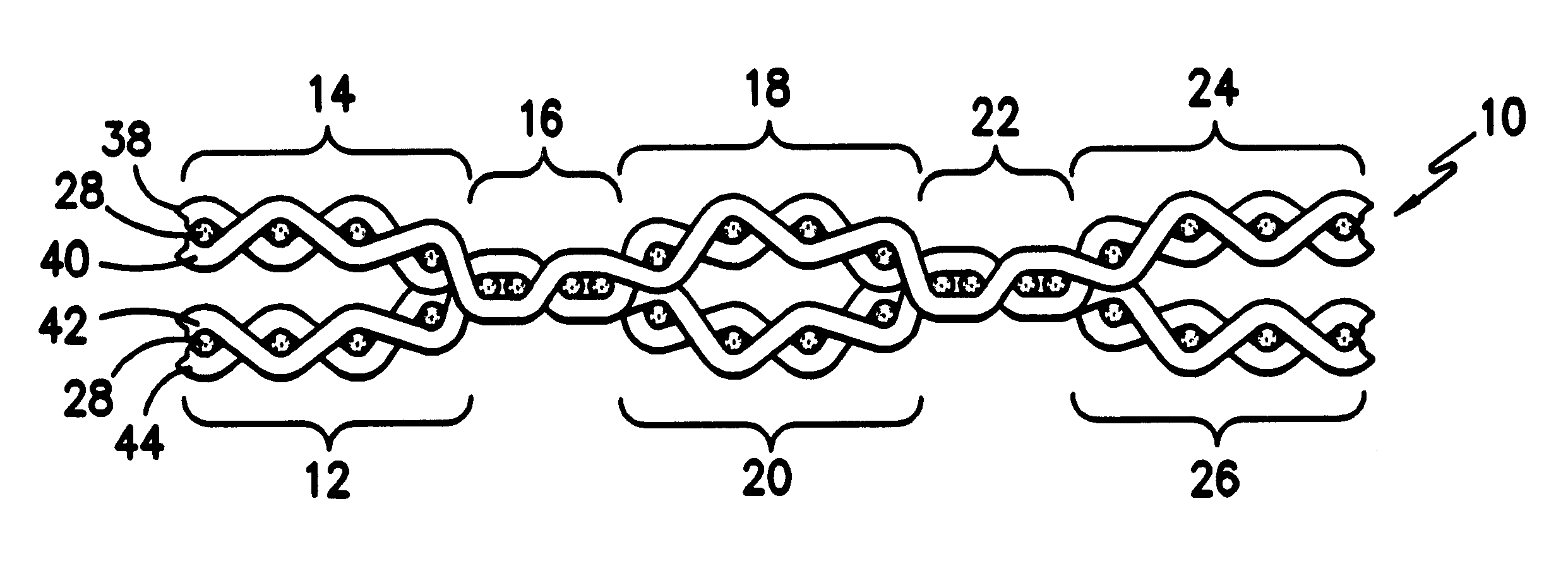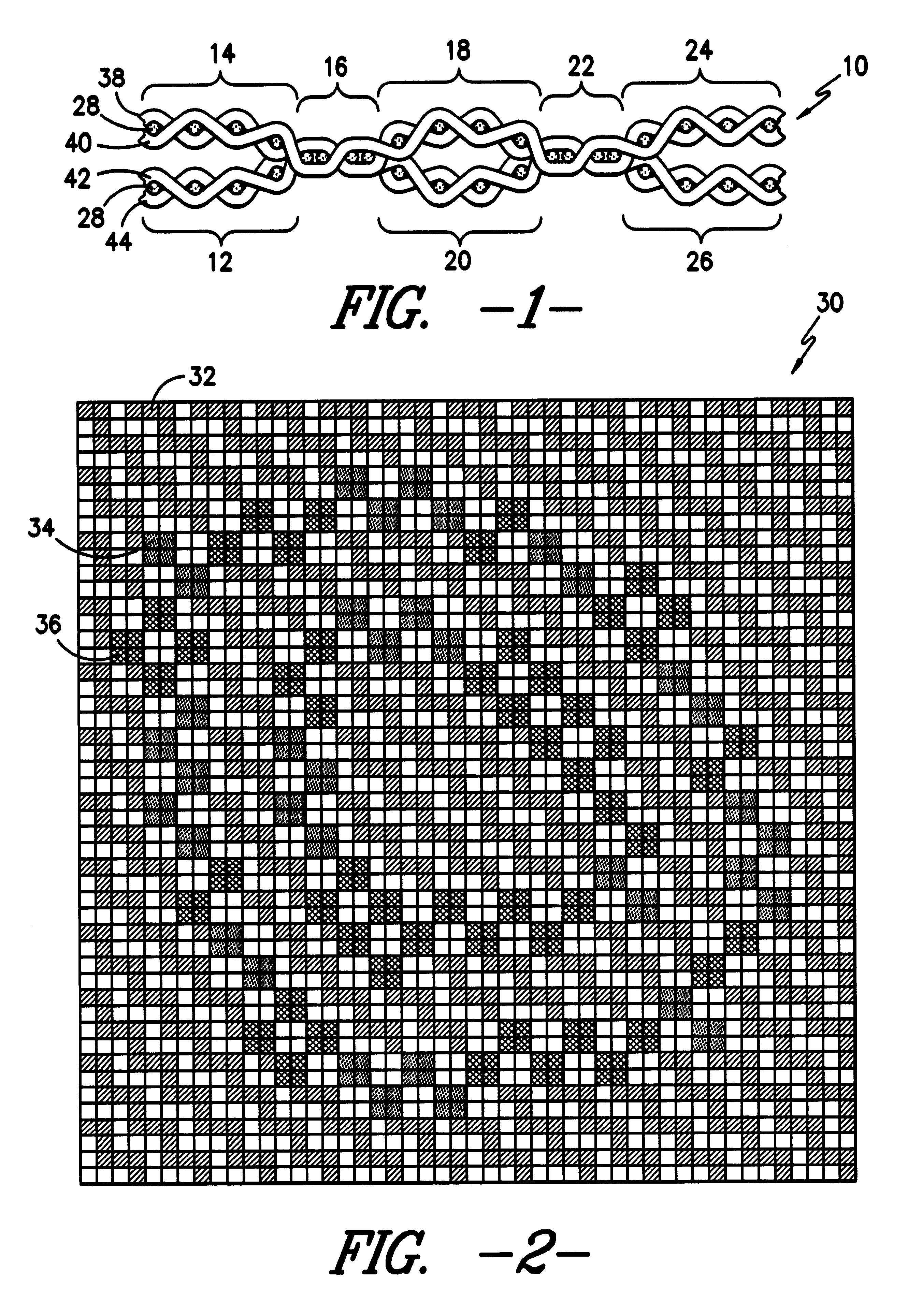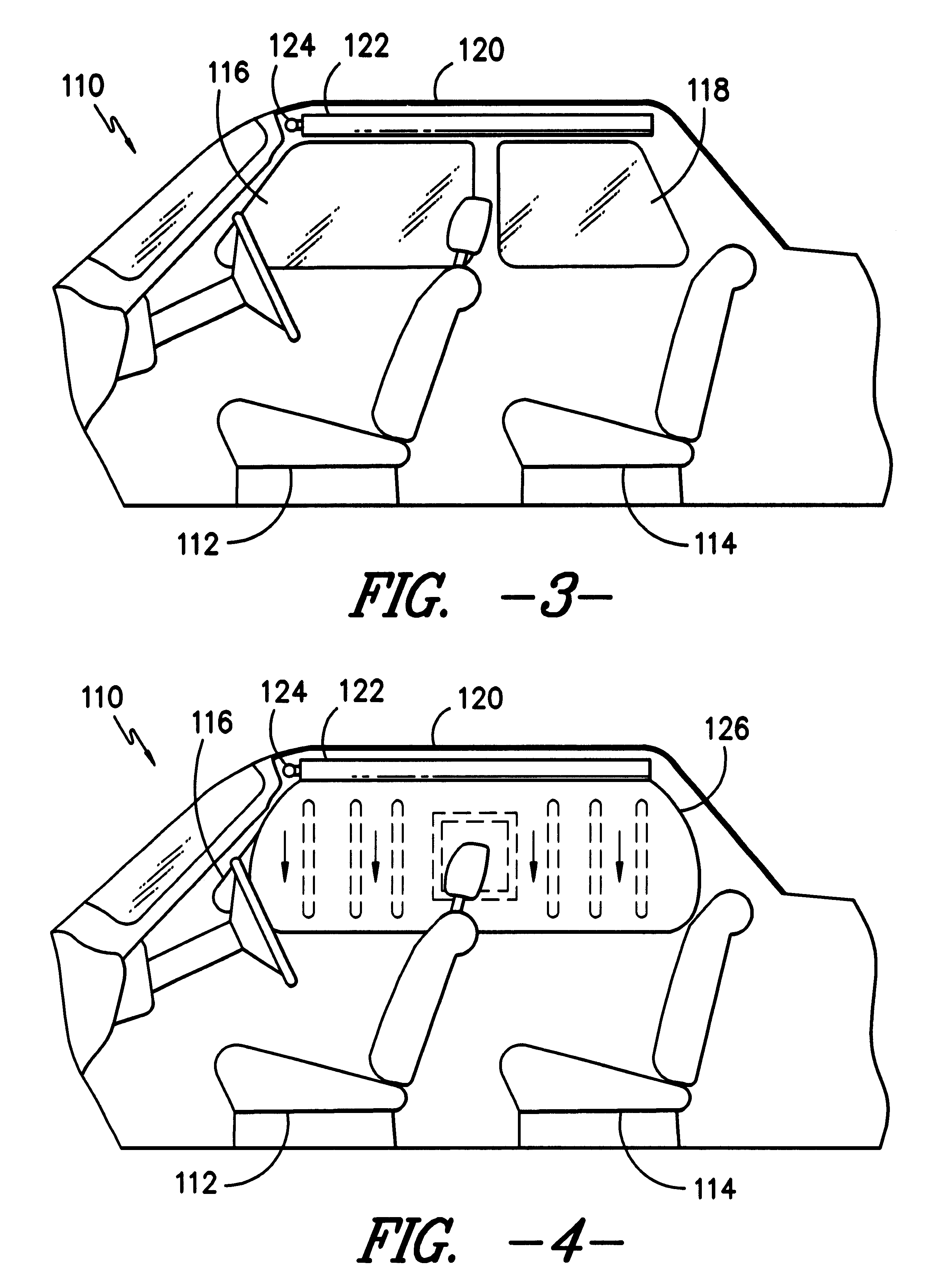In light of the background above, it can be readily seen that there exists a need for a low permeability, side curtain airbag that utilizes lower, and thus less expensive, amounts of coating, and therefore exhibits a substantially reduced packing volume over the standard low permeability type side curtain airbags. Such a coated low permeability airbag must provide a necessarily high leak-down time upon inflation and after long-term storage. Such a novel airbag and a novel coating formulation provides marked improvements over the more expensive, much higher add-on airbag coatings (and
resultant airbag articles) utilized in the past.
It is therefore an object of this invention to provide a coated airbag, wherein the coating is present in a very low add-on weight, possessing extremely high leak-down time characteristics after inflation and thus complementary low permeability characteristics. Another object of the invention is to provide an inexpensive side curtain airbag
cushion. A further object of this invention is to provide an highly effective airbag coating formulation which may be applied in very low add-on amounts to obtain extremely low permeability airbag structures after inflation. An additional object of this invention is to provide an airbag coating formulation which not only provides beneficial and long-term low permeability, but also exhibits excellent long-term storage stability (through heat aging and
humidity aging testing). Yet another object of the invention is to provide a low permeability side curtain airbag possessing a very low rolled packing volume and non-blocking characteristics for effective long-term storage within the roofline of an automobile.
The inventive coating, here a film, must possess a tensile strength of at least 2,000 psi and an elongation to break of greater than about 180%. Preferably, the tensile strength is at least 3,000 psi, more preferably, 6,000, and most preferably at least about 8,000 (the high end is basically the highest one can produce which can still adhere to a fabric surface). The preferred elongation to break is more than about 200%, more preferably more than about 300%, and most preferably more than about 600%. These characteristics of the film translate to a coating that is both very strong (and thus will withstand enormous pressures both at inflation and during the time after inflation and will not easily break) and can stretch to compensate for such large inflation, etc., pressures. The film itself is produced prior to actual contact with the target airbag cushion, or fabric, surface. In order to apply such a film, a lamination procedure must be performed through the simultaneous
exposure of heat and pressure over the film while in contact with the
target surface. The laminate may be applied over any portion of the target structure, although preferably it coats the entire cushion or fabric. Also, more than one laminated film may be present on the target cushion as one type of film (possessing certain tensile strength and elongation characteristics) may be preferably applied to certain discrete areas of the target cushion while a different film with different characteristics may be selected at other locations (such as at the seams). The only requirement is that the final product exhibit the aforementioned high leak-down properties. This film appears to act by "cementing" the contacted individual yams in place and possibly preventing leakage through open areas between woven yams and / or stitches. During inflation, then, the coating prevents leakage through the interstitial spaces between the yams and aids in preventing yam shifting (which may create larger spaces for possible gas escape).
Among the other additives particularly preferred within or on the film (or films) are heat stabilizers,
flame retardants, primer adhesives, and materials for protective topcoats. A potentially preferred thickener is marketed under the trade designation NATROSOL.TM. 250 HHXR by the Aqualon division of Hercules Corporation which is believed to have a place of business at Wilmington, Del. In order to meet Federal Motor
Vehicle Safety Standard 302
flame retardant requirements for the
automotive industry, a
flame retardant is also preferably added to the compounded mix. One potentially preferred flame retardant is AMSPERSE F / R 51 marketed by Amspec Chemical Corporation which is believed to have a place of business at Gloucester City N.J. As noted above, primer adhesives may be utilized to facilitate adhesion between the surface of the target fabric and the film itself. Thus, although it is preferable for the film to be the sole component of the entire coating in contact with the fabric surface, it is possible to utilize
adhesion promoters, such as isocyanates, epoxies, functional
silanes, and other such resins with
adhesive properties, without deleteriously effecting the ability of the film to provide the desired low permeability for the target airbag cushion. A topcoat component, as with potential silicones, as noted above, may also be utilized to effectuate proper non-blocking characteristics to the target airbag cushion. Such a topcoat may perform various functions, including, but not limited to, improving aging of the film (such as with
silicone) or providing blocking resistance due to the
adhesive nature of the
coating materials (most noticeably with the preferred
polyurethane polycarbonates).
The inflatable fabric itself, as noted above, is preferably produced from all-synthetic fibers, such as polyesters and polyamides, although natural fibers may also be utilized in certain circumstances. Preferably, the fabric is constructed of nylon-6,6, however, polyesters are also highly preferred. Mixtures of such fibers are also possible. The individual yarns utilized within the fabric substrate must generally possess deniers within the range of from about 40 to about 840; preferably from about 100 to about 630. Most preferably, such deniers average over the entire airbag
fabric structure at most 525; more preferably average at most 420; and also preferably average 315 and even as low as 210, if desired. In such instances of such low average deniers (420 and below), the thickness of the
fabric structure itself is quite low and thus, with the inventive coating applied at low add-on levels, exhibits excellent low packing volumes.
Additionally, it has also been found that the inventive
film coating compositions, at the inventive add-on amounts, etc., provide the same types of benefits with the aforementioned sewn, stitched, etc., side curtain airbags. Although such structures are highly undesirable due to the
high potential for leakage at these attachment seams, it has been found that the inventive coating provides a substantial reduction in permeability (to acceptable leak-down time levels, in fact) with correlative lower add-on amounts than with standard
silicone and
neoprene rubber coating formulations. Such add-on amounts will approach the 2.7 ounces per
square yard limit, but lower amounts have proven effective (2.2 ounces per
square yard, for example) depending on the utilization of a sufficiently high tensile strength and sufficiently stretchable elastomeric component within the
film coating composition directly in contact with the target fabric surface. Again, with the ability to reduce the amount of
coating materials (which are generally always quite expensive), while simultaneously providing a substantial reduction in permeability to the target airbag structure, as well as
high resistance to
humidity and extremely effective aging stability, the inventive coating composition, and the inventive coated airbag itself is clearly a vast improvement over the prior airbag coating art.
 Login to View More
Login to View More 


